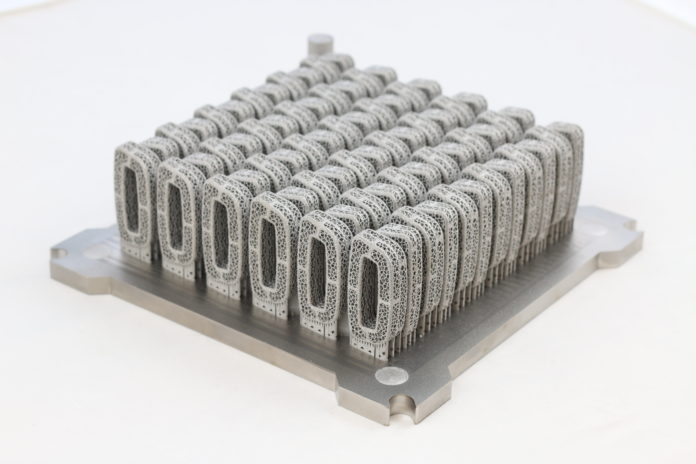The orthopedic sector is one to watch among medical applications that leverage additive manufacturing. With good reason: based on a report from SmarTech, the orthopedic segment of the additive manufacturing market generated almost USD$200 million in 2016 and is forecast to grow by around 30% CAGR until at least the middle of this decade.
Several AM technologies can be used to produce orthopedic implants for end-users. Another one that recently appeared in our radar is Electron Beam Melting Technology (EBM).
Amplify Additive, a company that combines deep clinical knowledge, engineering design expertise and more than two decades of additive manufacturing experience, gives a perfect example of the use of EBM in this segment.
AM helps Amplify Additive to bridge the gap between surgeon and engineer.
Patient-centric solutions oriented, Amplify Additive’s founder McLaughlin and his team provide personalized and bespoke medical treatment.
“We often to act as the bridge between two very different disciplines – orthopedic surgeons and design engineers. Teams often have a shared vision, but uncertainty about how best to implement additive can sometimes present hurdles to overcome. We’re able to use that combination to add value and offer organizations solutions to overcome those hurdles – because we implicitly understand both sides of the conversation,” said McLaughlin.
A year after the creation of the company, in September 2019, McLaughlin opened Amplify’s first facility in Scarborough, Maine. The accessible facility collaborates with companies and organizations that lack in-house infrastructures. Indeed, not only technology enables them to accelerate product development, but they can also produce components for companies that know the potential of AM for implant solutions but cannot afford the technology.
With three GE Additive Arcam EBM Q10plus machines in-house, they have built up extensive experience in handling AM systems. Indeed, the most important is not to have an industrial 3D Printer in-house, but to be able to make the most of it.
“I’m 100% behind EBM, and I believe the industry is in desperate need of additional capacity – specifically for the medical sector. The design freedom, flexibility and ability to stack efficiently on the build plate make EBM perfectly-suited for the manufacture of orthopedic implants. And with more surface roughness it could ultimately provide a better clinical environment for bone attachment and ingrowth,” McLaughlin added.
Only one semester after the opening of their facility, Amplify Additive has been recommended for ISO 13485:2016. Today, with the right partner by their side, they are ready to scale up their business and to be an orthopedic center of excellence for additive manufacturing in the US, and eventually worldwide.
Image via GE Additive – Remember, you can post free of charge job opportunities in the AM Industry on 3D ADEPT Media or look for a job via our job board. Make sure to follow us on our social networks and subscribe to our weekly newsletter : Facebook, Twitter, LinkedIn & Instagram ! If you want to be featured in the next issue of our digital magazine or if you hear a story that needs to be heard, make sure to send it to contact@3dadept.com






